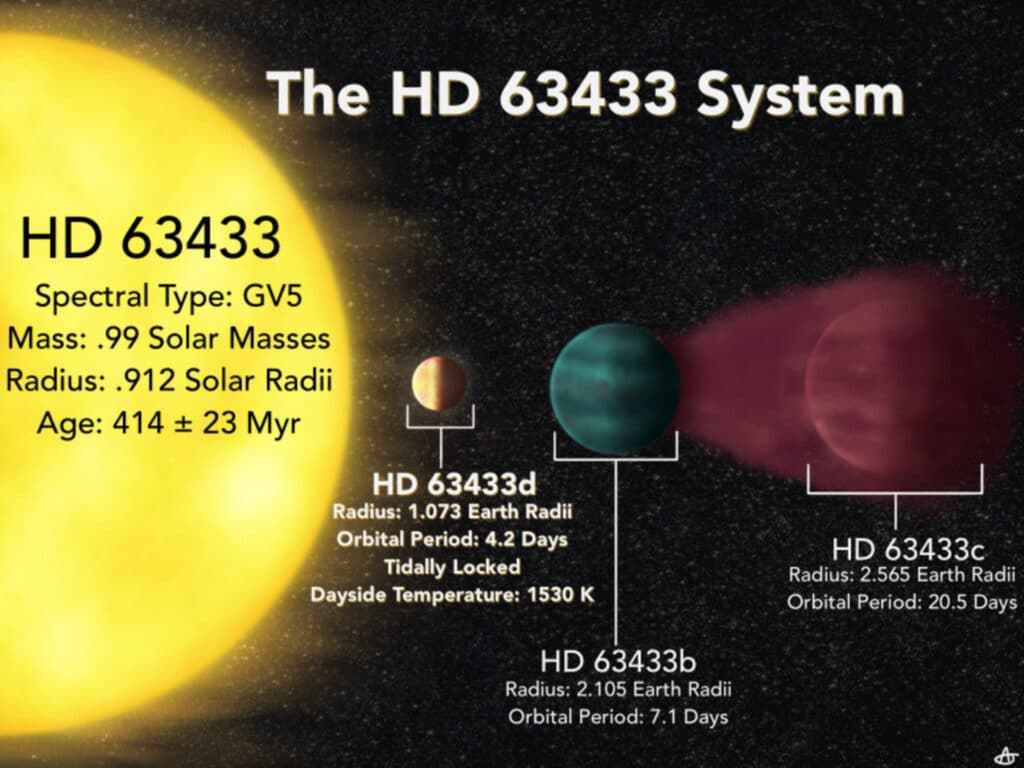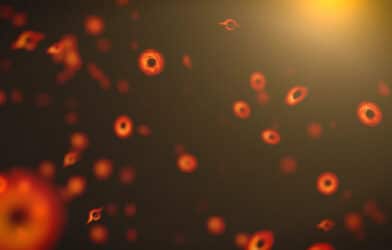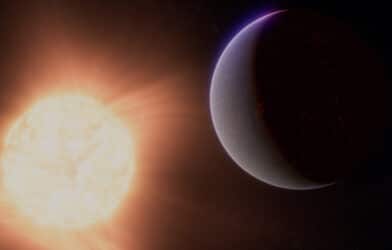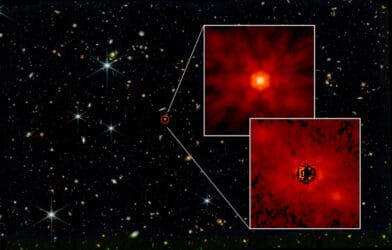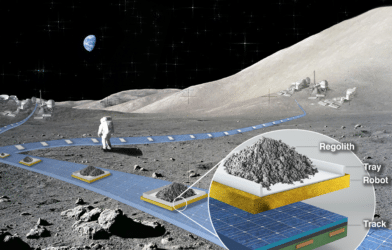A planet the size of Earth has been discovered in “our solar backyard.” Astronomers at the University of Wisconsin–Madison have revealed that the planet, dubbed HD 63433d, is closer and younger than any previously found. This scorching hot world offers a rare opportunity to study planetary evolution closely resembling early Earth.
HD 63433d is the third planet orbiting the star HD 63433. Remarkably, it completes an orbit every 4.2 days due to its close proximity to its star.
“Even though it’s really close-orbiting, we can use follow-up data to search for evidence of outgassing and atmospheric loss that could be important constraints on how terrestrial worlds evolve,” says Melinda Soares-Furtado, a NASA Hubble Fellow at the University of Wisconsin–Madison who will begin work as an astronomy professor at the university in the fall, in a media release. “But that’s where the similarities end — and end dramatically.”
The planet is likely tidally locked, meaning one side perpetually faces the star, reaching extreme temperatures up to 2,300 degrees Fahrenheit, possibly hosting lava flows, while the other side remains in darkness.
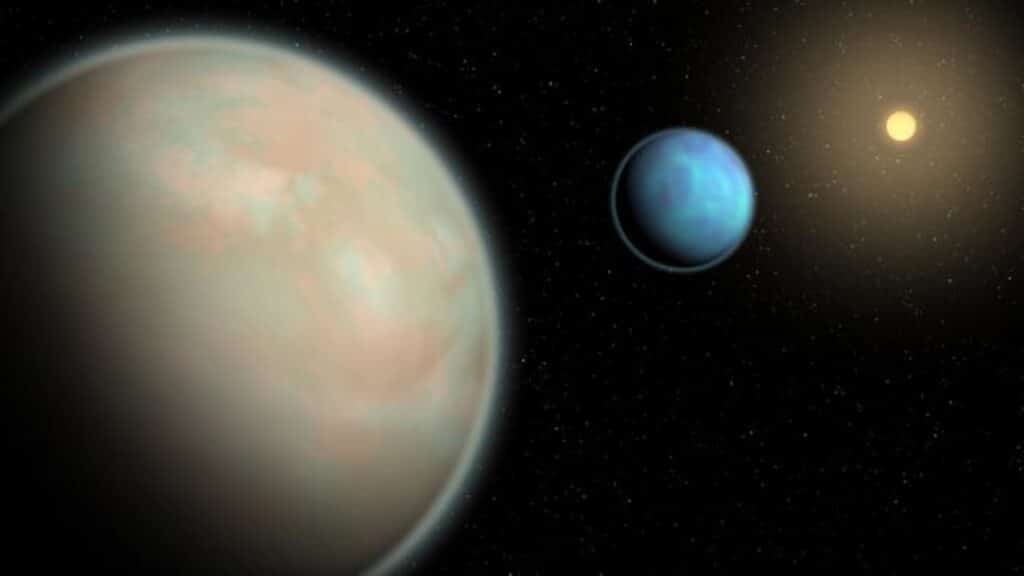
The star HD 63433 shares similarities with our Sun in size and type but is significantly younger, at approximately 400 million years old. It resides about 73 light years away in the Ursa Major constellation, visible from Earth with a good pair of binoculars on a clear night.
The planet’s discovery was part of the THYME planet-hunting project. Initially, in 2020, the team used data from NASA’s Transiting Exoplanet Survey Satellite (TESS) to identify two mini-Neptune-sized planets orbiting HD 63433. Further observations by TESS allowed the detection of HD 63433d as it transited between the star and the satellite.
Astronomers see HD 63433d as an ideal candidate for further study. Its proximity and the visibility of its young star from both the Northern and Southern Hemispheres make it accessible to numerous observatories, like the South African Large Telescope and the WIYN Observatory in Arizona. Soares-Furtado is galvanized about the possibilities.
“This is our solar backyard, and that’s kind of exciting,” says Soares-Furtado. “What sort of information can a star this close, with such a crowded system around it, give away? How will it help us as we move on to look for planets among the maybe 100 other, similar stars in this young group it’s part of?”
HD 63433d’s unique characteristics challenge current understandings of planetary formation and evolution. As astronomers continue to study this young, close-orbiting planet, they hope to gain insights into the early stages of rocky planets like Earth. This discovery also opens the door to developing new methods for studying planetary gases and magnetic fields, potentially advancing our knowledge of planetary science and the search for life-sustaining worlds.
The study is published in The Astronomical Journal.
